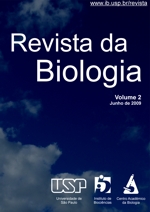Tree canopy characteristics in the district of Pinheiros in São Paulo in the beginning of the XXI Century
DOI:
https://doi.org/10.11606/issn.1984-5154.v2p18-21Keywords:
tree canopy, conectivity, urban environment.Abstract
Tree canopy is an important component in the urban environment because it improves people’s quality of life by enhancing environmental situation. In the district of Pinheiros in Sao Paulo, the mapping based on satellite images in a detailed scale points out that vegetation is heterogeneously distributed, thus being more concentrated in patches in the north and south portions of the district, corresponding to 15% of its total area. The central portion of the district has much less vegetation and should be considered a main focus for environmental improvement planning. The vegetation arrangement, where it exists, is clumped, however not continuous and could also be improved with vegetation intensification.Downloads
References
Furlan, S. A. “Paisagens sustentáveis: São Paulo e sua cobertura vegetal” In: CARLOS, A. F. A. & OLIVEIRA, A. “Geografias de São Paulo: a metrópole do século XXI”. São Paulo: Contexto, 2004.
Jim, C. Y. “Tree-canopy characteristics and urban development in Hong Kong” The Geographical Review V. 79 No. 2 (p. 210) American Geographical Society: Lawrence, 1989.
Lopez, M. “34 Ibirapueras perdidos em uma década”. Folha de São Paulo, set/2003.
Nucci, J. C. & Cavalheiro, F. “Cobertura vegetal em áreas urbanas – Conceito e Método” Revista GEOUSP – Tempo e espaço, No. 6 (p. 29). São Paulo: Departamento de Geografia, 1998.
Rocha, Y. T. “Parques Urbanos: um recorte de São Paulo e suas potencialidades para o turismo” Revista GEOUSP – Tempo e Espaço, No. 9 (p. 79). São Paulo: Departamento de Geografia, 2000.
Downloads
Published
Issue
Section
License
Copyright (c) 2009 Julia Camara de Assis

This work is licensed under a Creative Commons Attribution 4.0 International License.
We ensure that our journal does not retain any copyright and that these are exclusive of the author(s) of the text. In that sense, we intend to break any restrictions to the published material and to achieve more intensely our goal of communicating science.






